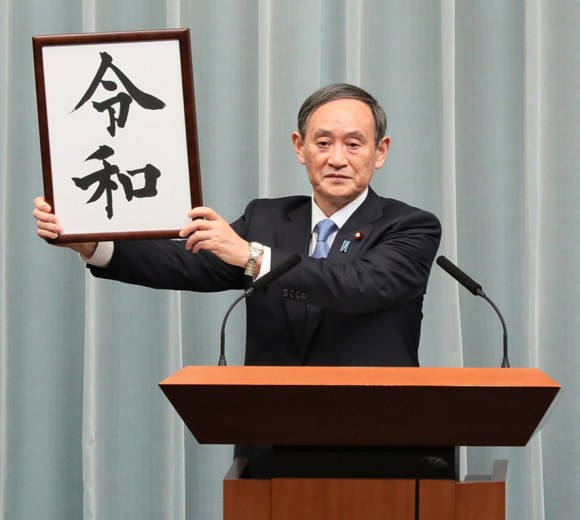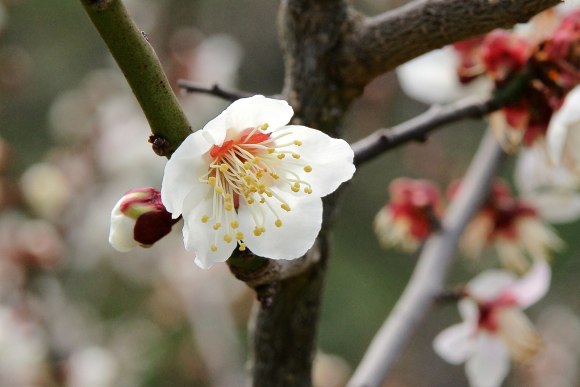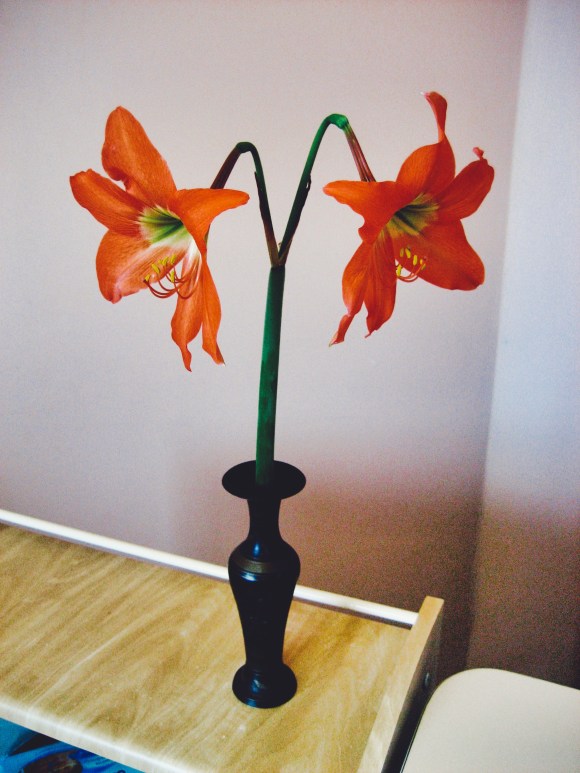Here in Japan we have just entered “Golden Week,” a spring-time holiday stretch typically 5 days long. However this year is different than all others. This “Golden Week” is a 10-day holiday stretch celebrating the ascension of the new emperor to the Chrysanthemum throne. It is a big deal. For the first time in two hundred years, the current emperor is abdicating his throne for his son to take over (it usually only happens upon the death of the emperor). And with each transition to a new emperor, a new era name comes along with it. Here in Japan they date their years according to the year of the emperor’s reign. For example, I was born in Showa 53 (the 53rd year of the Showa reign). Through a complicated process, they carefully pick the name of the new era that will correspond with the new emperor’s rule. And each name has a meaning. Past eras include “Meiji” (enlightened rule) from 1868 to 1912, “Showa” (enlightened harmony) from 1926.
So, how important is this name? Well, Japan’s emperor is a figure-head ruler not unlike the queen of England, but the importance of the era name cannot be overlooked. Names set a tone and an expectation. Names carry weight. A good name is worth gold — but a bad name?

Before I tell you the meaning of the new Japanese era, I must share something else that God put on my heart earlier this year. In February at Paz Church I shared a message “Flowers in the Desert.” Flowers only bloom in the desert in special circumstances — after a rare long-awaited rain. But they are especially spectacular and can be compared to nothing else in the world. People flock to the desert to see them in bloom! The harsh conditions of the desert create an environment where this is possible. Without those conditions, this rare event would not be so special and unique. A great example is the Atacama Desert in South America.
In our own life story, flowers have a very special significance. They serve as bookmarks of our own desert experience. A flower bloomed on the day we lost our firstborn daughter — and from one stem it bloomed into two separate flowers. It was a symbol of hope for us in what would be the darkest time in our lives. We called it our “hope flower” and it was a sign of things to come. By a miracle, when the doctors said Ruth would not be able to conceive again, she conceived, and with twins! But the miracle did not stop there, for on the day that Ruth was to have the twins, another flower bloomed in our yard — a double flower of incredible significance. A sign that we had passed through the desert, we had weathered the winter and now would enjoy the spring. You see, God speaks through nature, and in this case flowers.
Just as those flowers were hope for us in the desert, so Japan has its own flowers of hope, the plum blossoms. They are not as famous as Japan’s cherry-blossoms, but a month before the cherry-blossoms even open, the plum blossoms bloom. They bloom in the midst of winter, flowers in the desert of winter, with the promise that spring is near.
I shared that the Church in Japan is like plum blossoms that blossom in the midst of a winter of fear, depression, exhaustion, hopelessness and apathy. When the world around us is dark and wintery, filled with fear, God’s people blossom with joy, faith, love and purpose. This will trigger a blossoming of the Japanese people in God’s love, and His plans and purposes will work out beautifully for the good. Beauty from ashes. Love from fear. Faith from doubt. God will take all the years tough years and turn them into something so beautiful that the whole world takes note. Just as God said to His exiled people, He says to his people in Japan today:
“For I know the plans I have for you,” declares the Lord, “plans to prosper you and not to harm you, plans to give you hope and a future.”
Jeremiah 29:11
Little did I know that this message was about to be broadcast throughout the whole country in a very different way.

All of Japan was tuned in to see the announcement of the new era name. And when it was revealed early in April, it was not the expected choice. It was out of left field. Truly God’s Spirit was speaking. Japan’s new era beginning May 1st was revealed as 令和 “Reiwa” and was taken from some of the earliest Japanese literature. It refers to the plum blossoms, which are the first to bloom after a long winter. Look at what Japan’s very own Prime Minister said about the choice.
“Like the flowers of the plum tree blooming proudly in spring after the cold winter, we wish the Japanese people to bloom like individual flowers with the (promise of the) future. With such a wish for Japan, we decided upon ‘Reiwa.'”
Prime Minister Shinzo Abe

In my amazement I listened to the meaning of the Reiwa Era. Each character has it’s own meaning, which when put together mean “harmony” and “peace.” Do you know how you can translate the new era into Portuguese? Paz. Yes, as in Paz Church or Paz Coffee Shop. I get goose bumps just thinking about it. This is the era of Paz in Japan. It’s the era of the Church in Japan. It’s the era of the Prince of Peace, Jesus Christ, to reign in the hearts of the Japanese people. And as the Church blossoms in Japan, so will the Japanese people. The very leaders of Japan have declared it.
The new name sets the tone of things to come. The leadership of Japan may not have been aware of it, but it opens the doors for the Church to be bold in the love of Jesus and to see families blossom and grow. It’s time for the Church in Japan to get off the sidelines of society and make a difference in day-to-day life. Welcome 令和 Reiwa! Welcome Peace. Welcome to the Prince of Peace, Jesus!








One reply on “令和 Reiwa, The New Japanese Era”
So good man! Excited to be here for such a time as this!